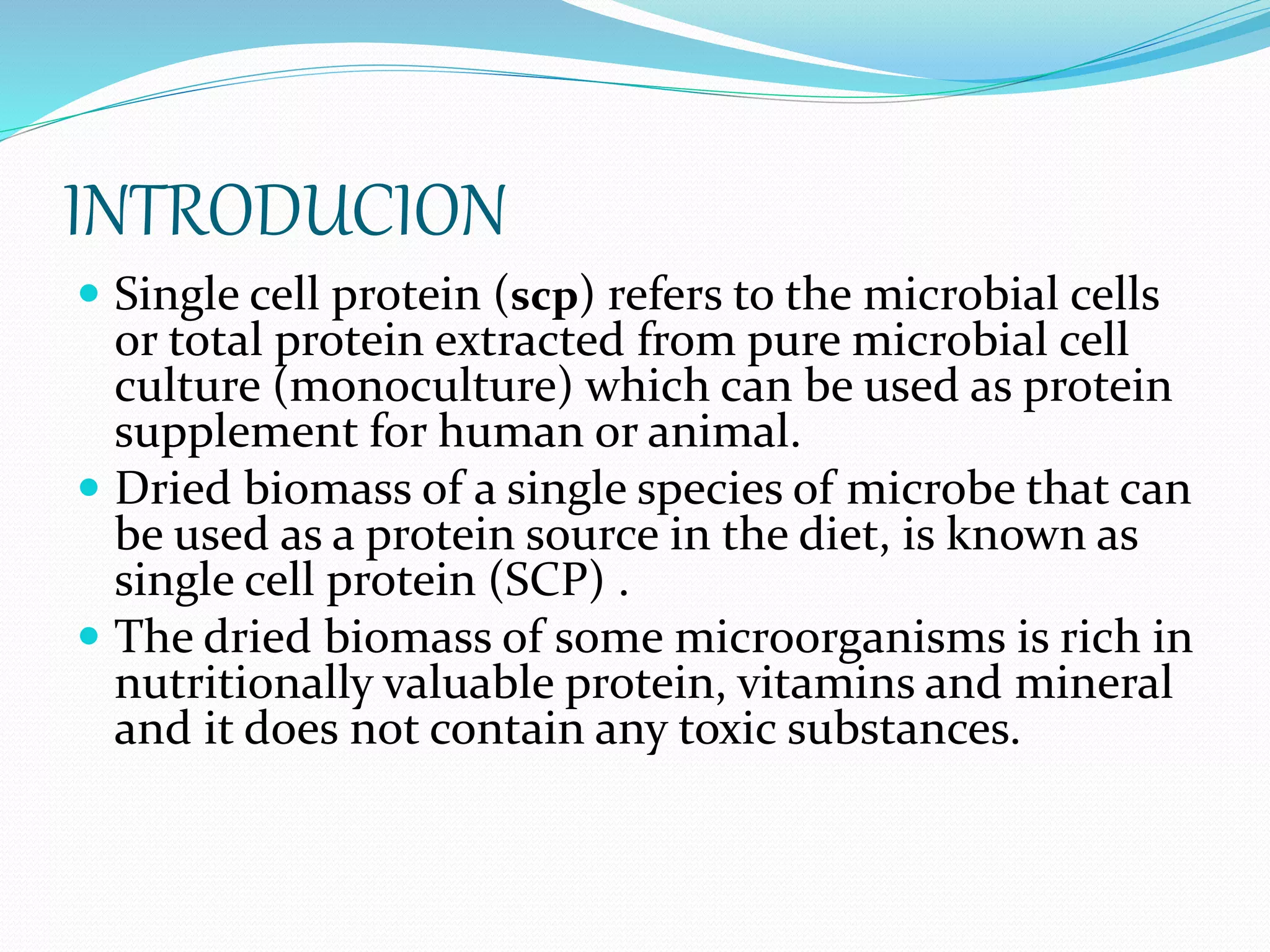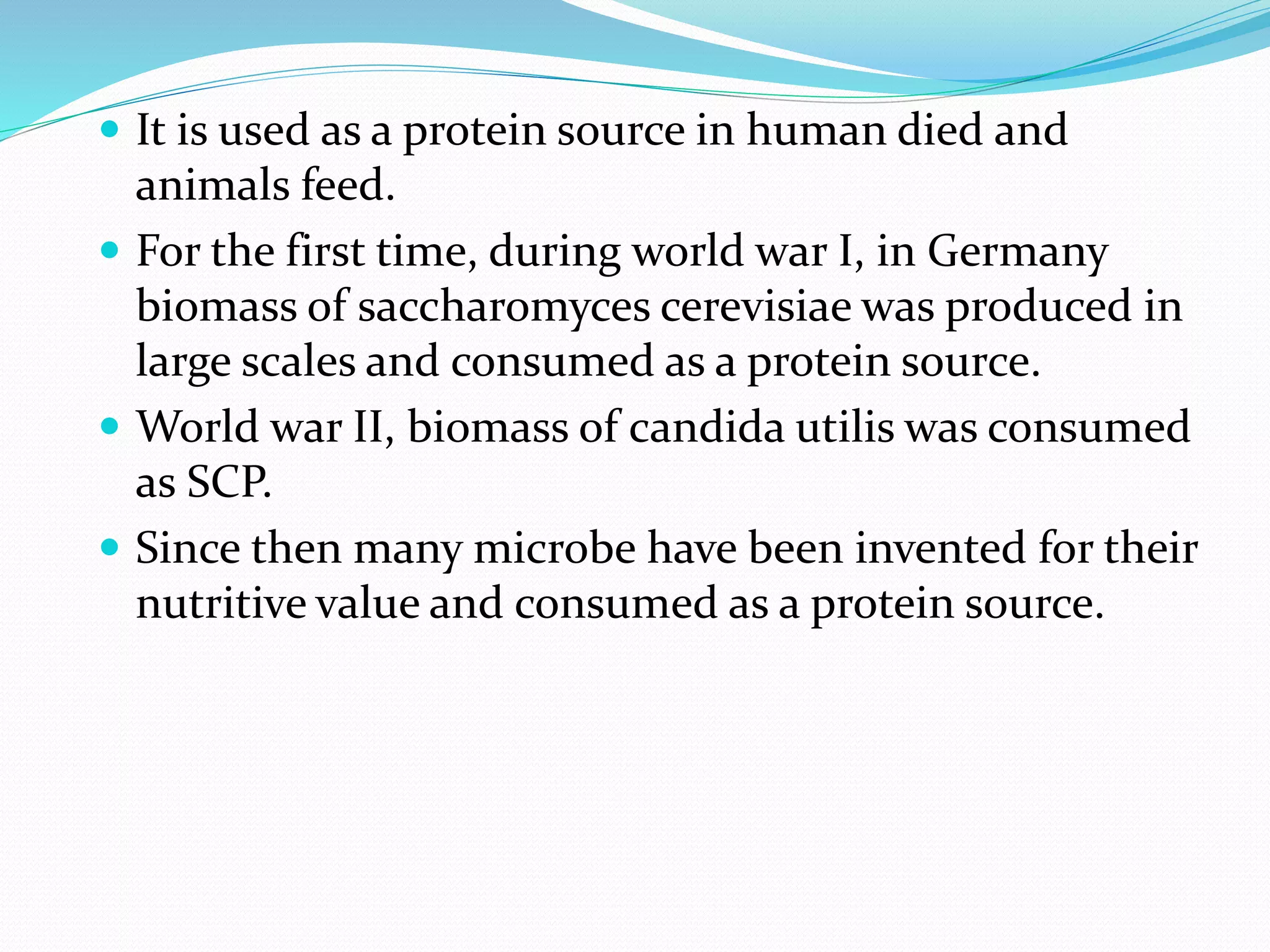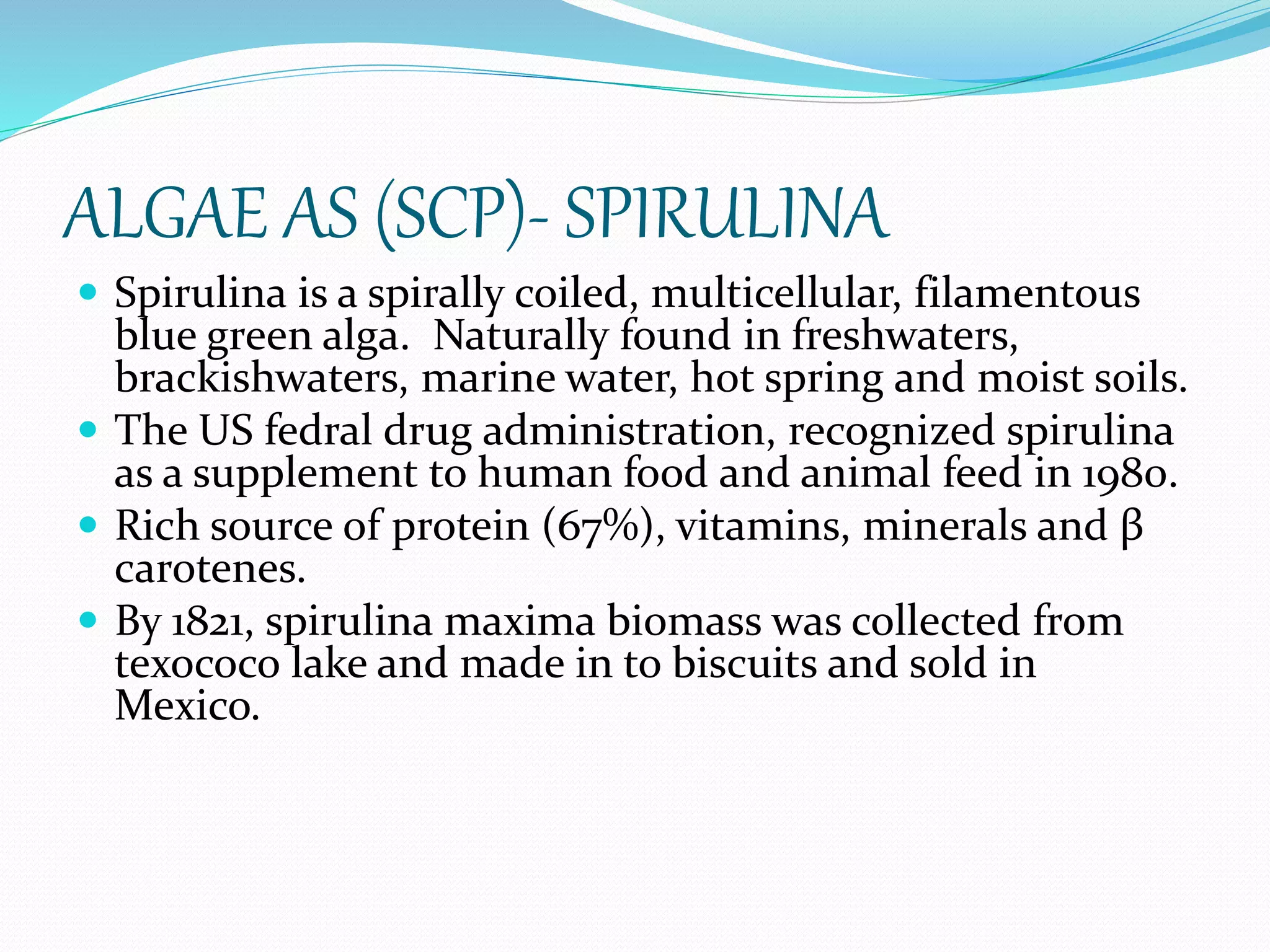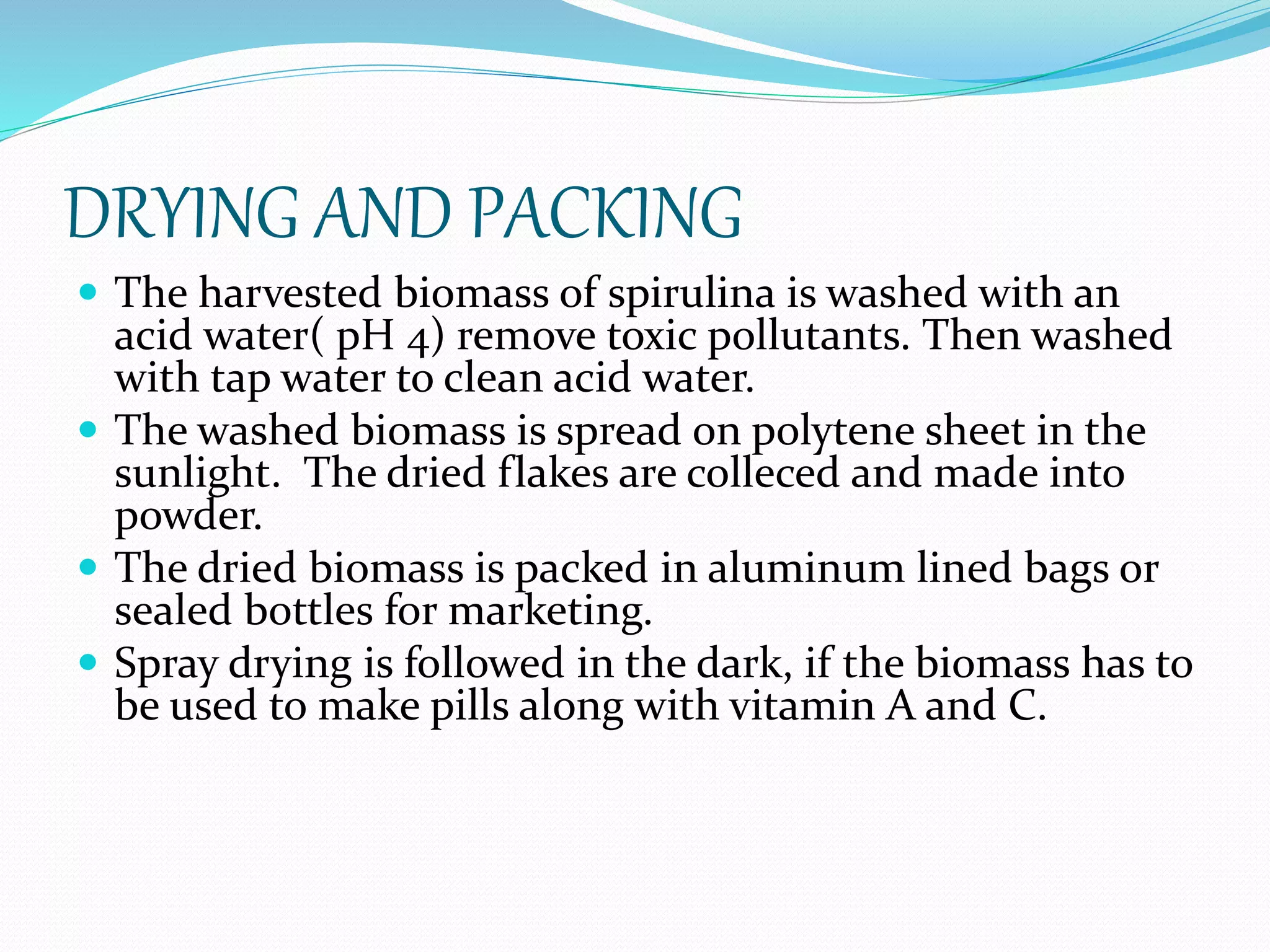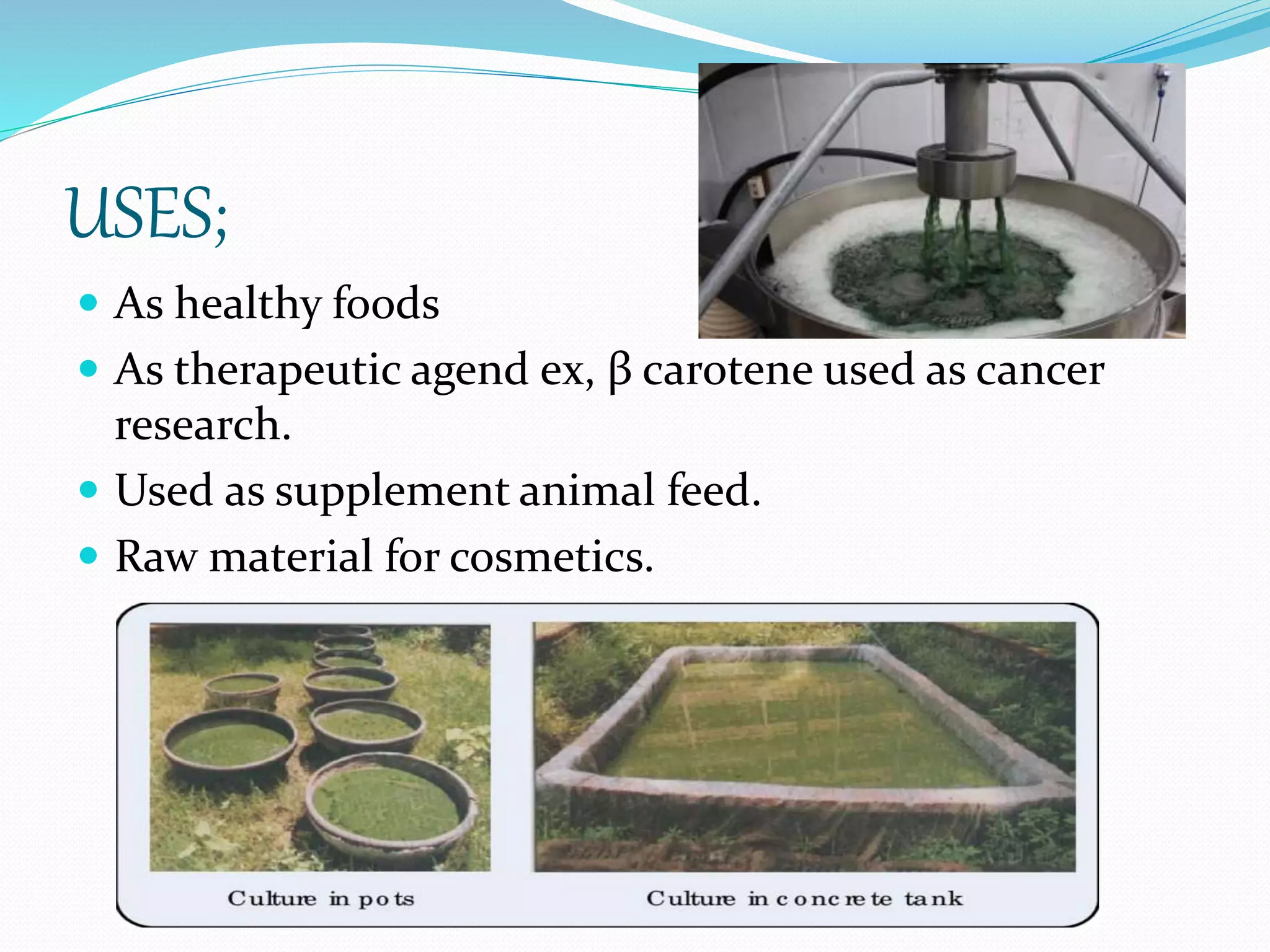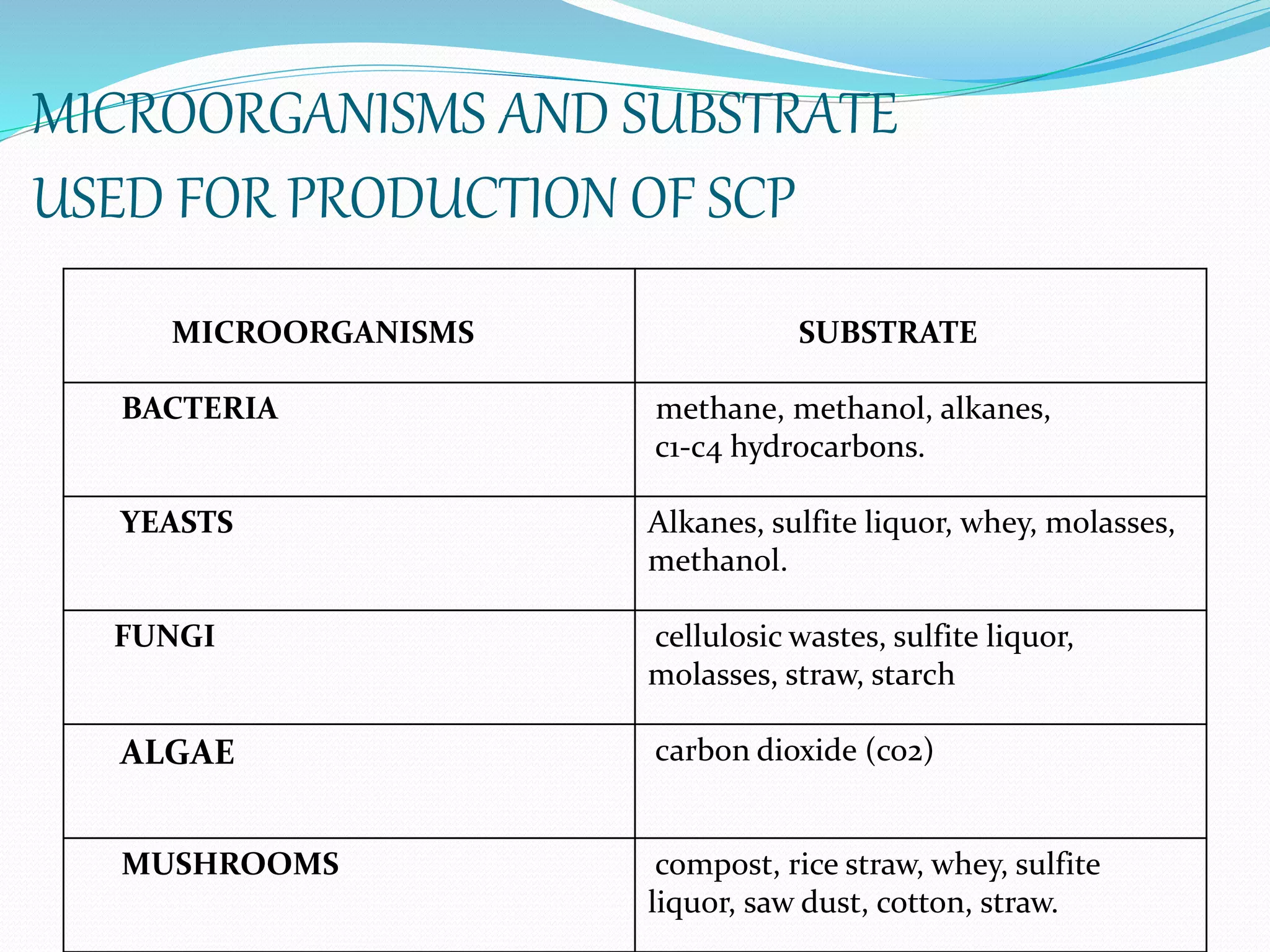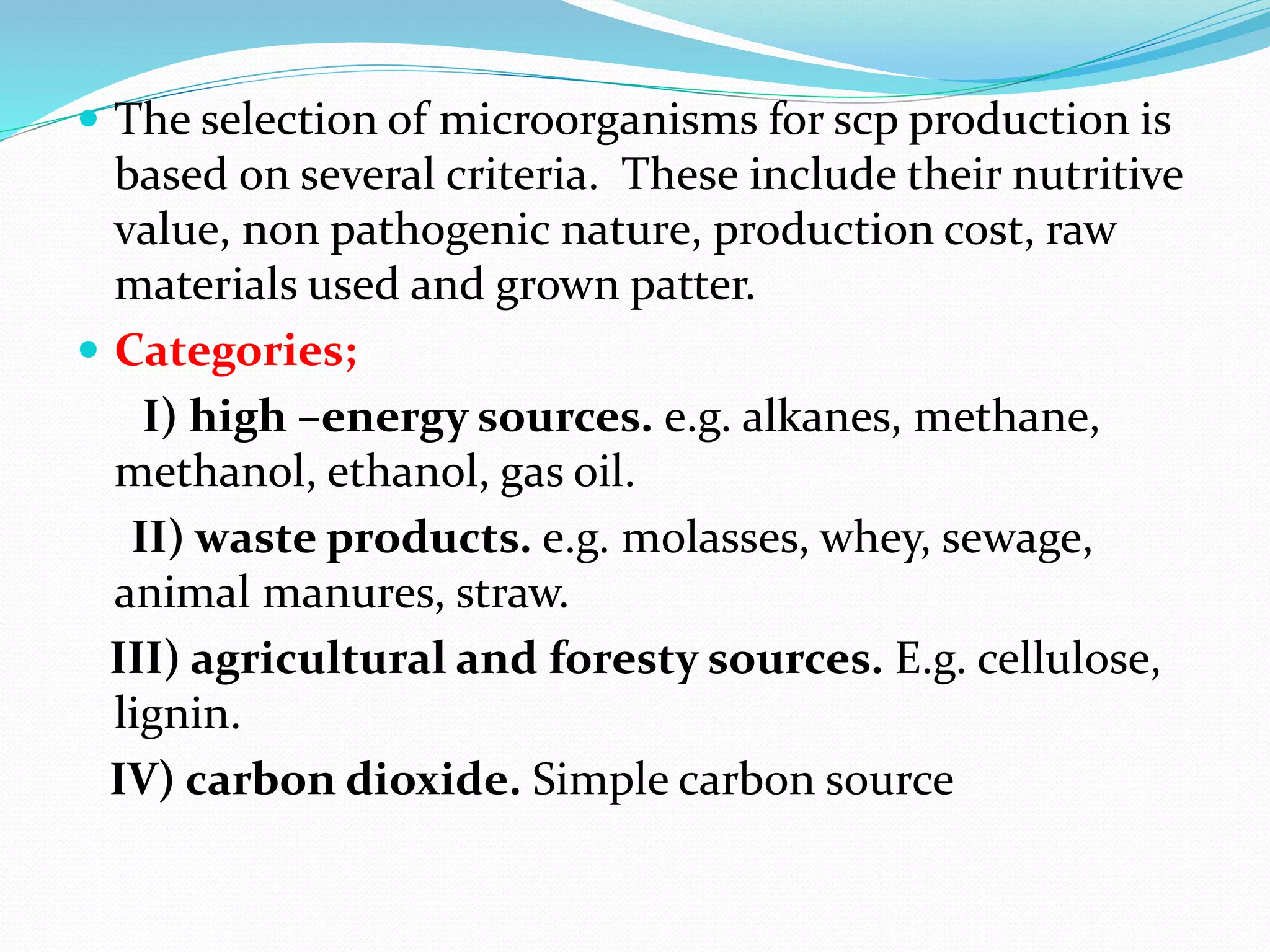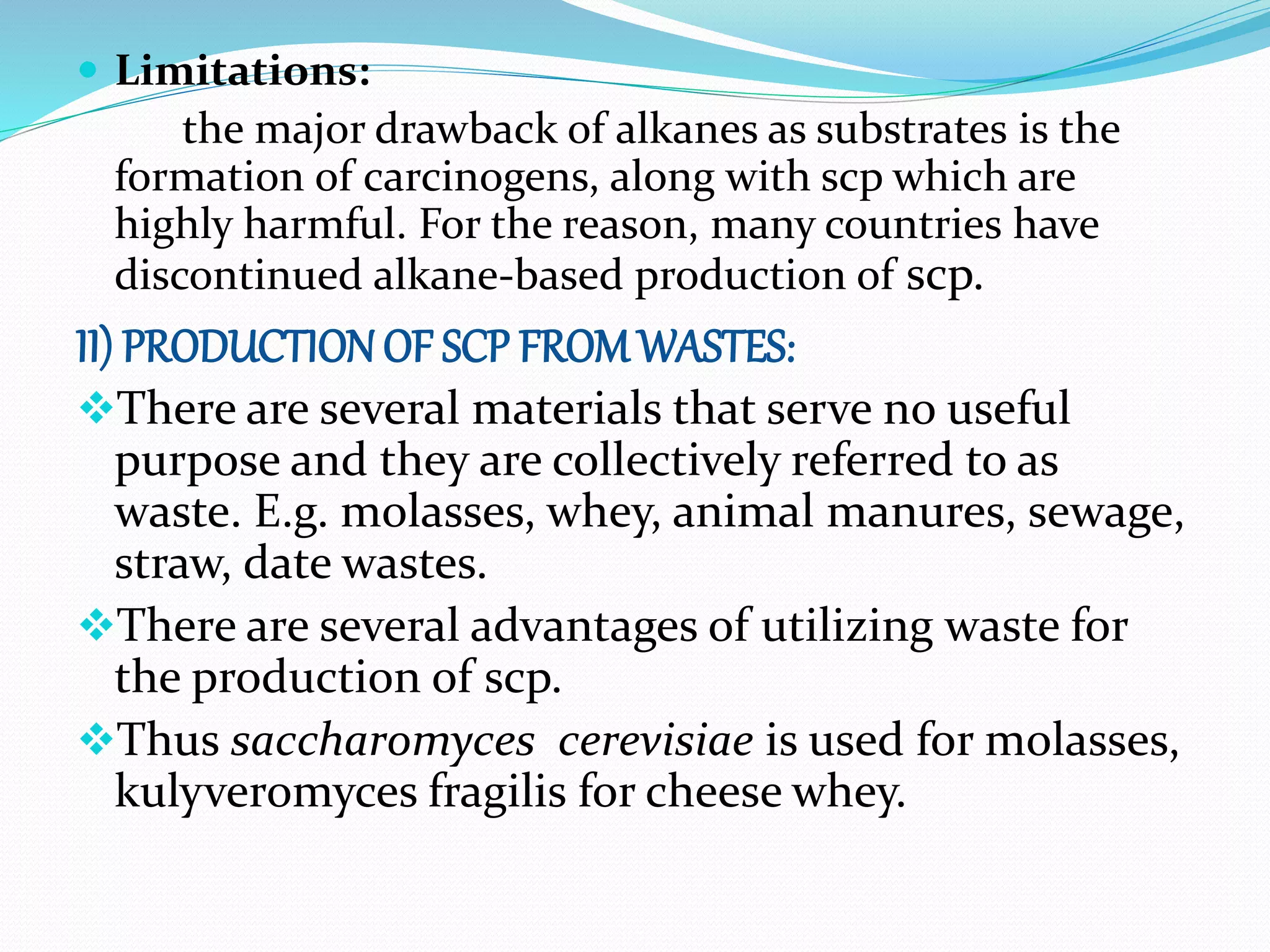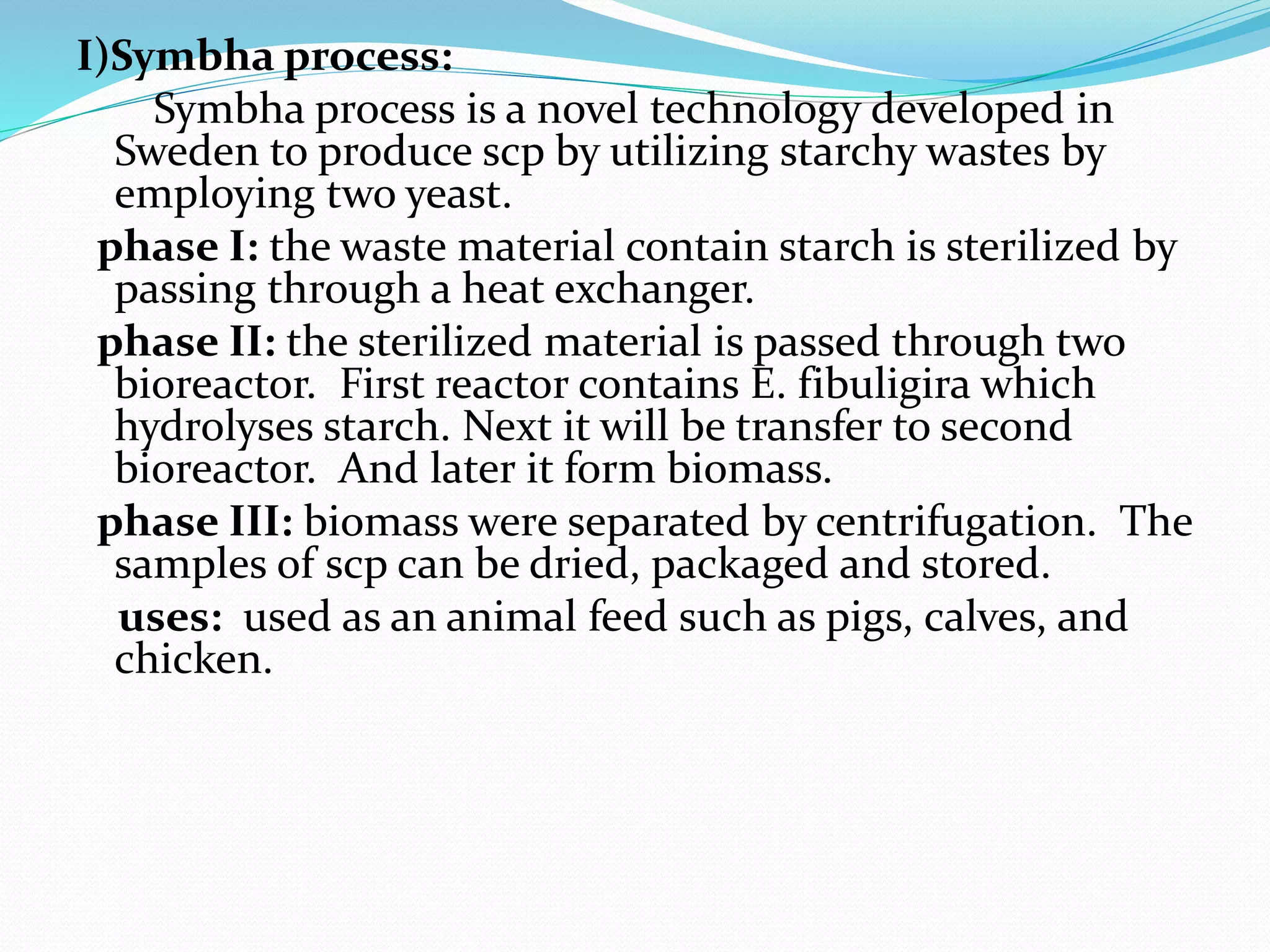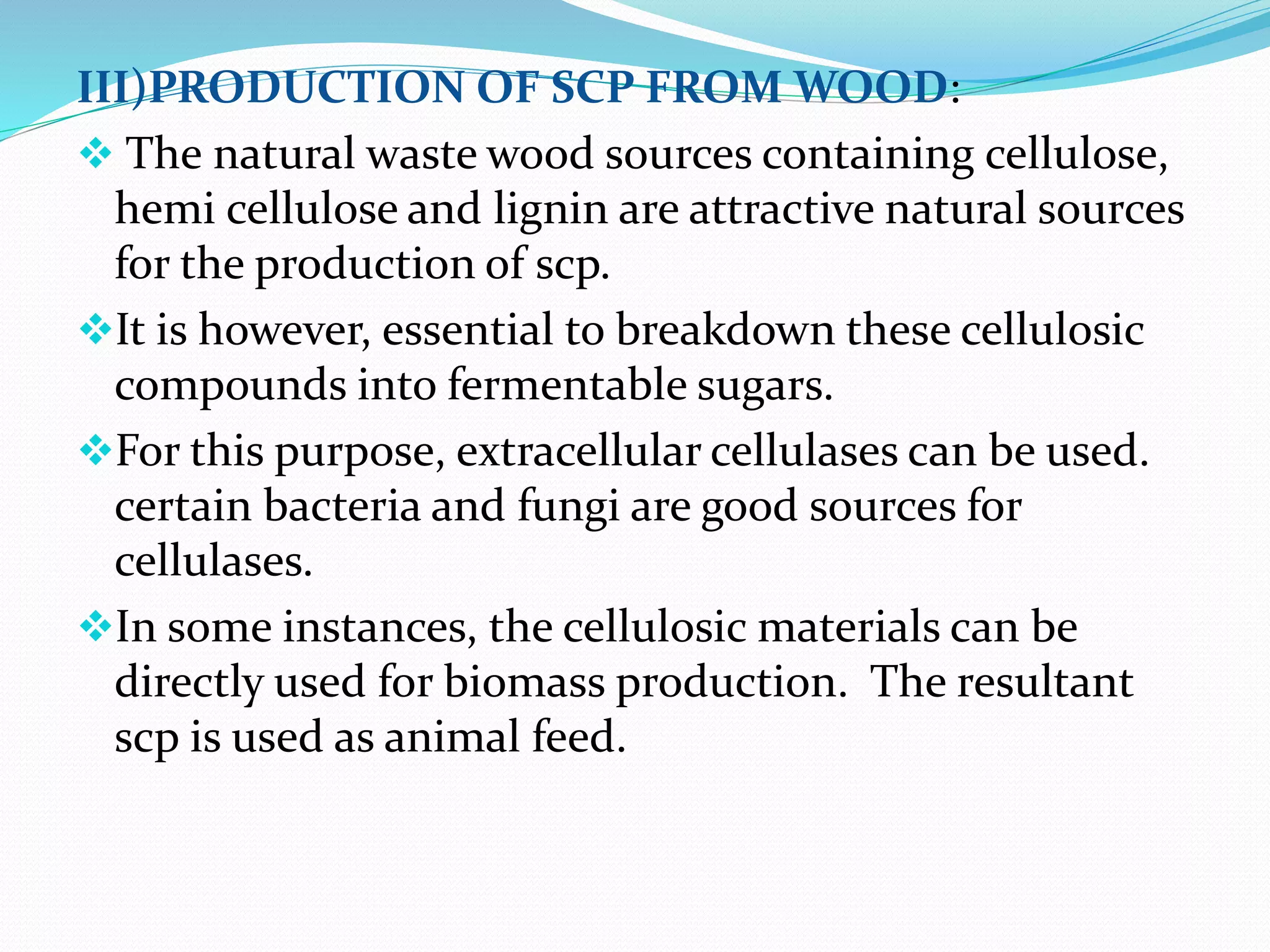This document discusses single cell protein (SCP), which refers to microbial cells or protein extracts that can be used as a protein supplement. SCP contains 60-80% protein as well as other nutrients. Various microbes such as algae, fungi and bacteria can be used to produce SCP. SCP production offers advantages such as low space requirements, ability to use waste materials, and independence from climate. Specific microbes discussed include Spirulina algae and methods of mass culturing, harvesting, drying and using Spirulina SCP. The document also outlines various microorganisms and substrates that can be used to produce SCP.

